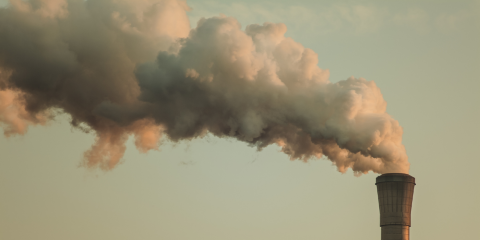South Australia leads nation towards green iron amid growing global competition

Australia needs to ensure markets exist for the emerging green iron export opportunity
Key Takeaways:
As the hype over green hydrogen’s potential uses undergoes a reality check, its role in the production of green iron and steel is firming.
Australia faces growing international competition in the emerging green iron space from the likes of Brazil, Canada, the Middle East and North Africa.
South Australia has taken a nation-leading position, greatly helped by its rapidly decarbonising power grid.
2 August 2024 - (IEEFA Australia): Amid growing global competition in the emerging green iron space, South Australia has now positioned itself at the forefront of national efforts to capitalise on the opportunity, according to the Institute of Energy Economic and Financial Analysis (IEEFA).
A new briefing note by IEEFA warns that Australian governments will need to ensure that markets for future green iron exports exist, given some steelmakers’ reluctance to import iron instead of producing it themselves.
Green iron is produced when iron ore is reduced in a direct reduced iron (DRI) process using green hydrogen, rather than using gas or coal in blast furnace-based ironmaking processes. DRI is a mature technology in use globally that currently requires a higher-grade iron ore than blast furnaces.
Despite some considerable over-reaction to the news that Fortescue is extending its green hydrogen production timeline, the role of green hydrogen in industrial applications like iron and steelmaking is firming up. Fortescue has made clear that it remains committed to green hydrogen.
A key advantage that South Australia enjoys is that its large reserves of high-grade iron ore are suitable for DRI. Miners including Magnetite Mines are keen to open them up.
Other key advantages for the state are the very high and growing penetration of renewable energy in its power mix, and the state government support that both green hydrogen and green iron are now getting.
The state government’s new Green Iron and Steel Strategy encompasses the establishment of a new green iron plant in the Upper Spencer Gulf. It also targets production at a new iron ore mine, first shipment of green iron, construction of a new DRI plant, and an end to coal imports – all by 2030. An expressions of interest process was launched in June 2024, seeking industry partners to jointly investigate the establishment of a green iron industry in the state by 2030.
“A first wave of global green iron and steel plants can be expected in locations that have both high-grade iron ore and power grids that are already decarbonised, usually via hydro power,” says Simon Nicholas, IEEFA’s Lead Analyst, Global Steel.
International competition is already ramping up in places that have these advantages, including Sweden, Canada and Brazil. While the Australian government is offering an AU$2/kg green hydrogen production tax credit, Canada and Brazil are also introducing tax benefits for clean hydrogen production.
The Middle East and Africa also have an opportunity in low-carbon iron trade.
“South Australia is unique in that it has decarbonised its power grid through a rapid switch from fossil fuels to wind and solar, giving the state the potential to produce green hydrogen using renewable power that would otherwise be curtailed,” Mr Nicholas says.
“Domestically produced green hydrogen can be used to process South Australian high-grade iron ore into green iron, which can be exported to steelmakers overseas for processing into low-carbon steel.
“South Australia isn’t the only state eyeing the green iron opportunity. Queensland has one green hydrogen project in the pipeline, and Western Australia is alive to the potential of shifting focus to its higher-grade iron ores.”
Australia may need to overcome resistance by major steelmakers to importing iron (as hot briquetted iron (HBI)) instead of the raw iron ore. However, if green hydrogen can be produced cheaply, lowering the cost of green iron, the economic case may be too strong to ignore.
“European governments are subsidising their steelmakers to transition their operations from blast furnaces to DRI domestically, not to see ironmaking relocated overseas,” Mr Nicholas says. “Asian governments may also be reluctant to see their steelmakers relocate ironmaking offshore.
“However, importing green iron from locations where green hydrogen production is cheaper can lower the overall cost of the global steel technology transition away from fossil fuels.”
Australia must act now to capitalise on its natural and geographical advantages in the rapidly developing global green iron race.
“Momentum in Australia needs to intensify,” Mr Nicholas says. “With Chinese iron ore demand past its peak, developing Asian countries are unlikely to pick up the slack. Significant iron ore oversupply is predicted towards the end of this decade, so it is a good time for Australia to position its iron ore (or iron) industry for the longer term.
“Australia is well placed to become an exporter of green iron in addition to iron ore, but federal and state governments need to make sure there are markets for it overseas. This may require working with the governments of major steelmakers such as China, Japan and South Korea, but also those of emerging Asian nations.”
Read the report: South Australia leads nation towards green iron as global competition grows
Media contact: Amy Leiper [email protected] +61 414 643 446
Author contacts: Simon Nicholas [email protected]
About IEEFA: The Institute for Energy Economics and Financial Analysis (IEEFA) examines issues related to energy markets, trends, and policies. The Institute’s mission is to accelerate the transition to a diverse, sustainable and profitable energy economy. (ieefa.org)











